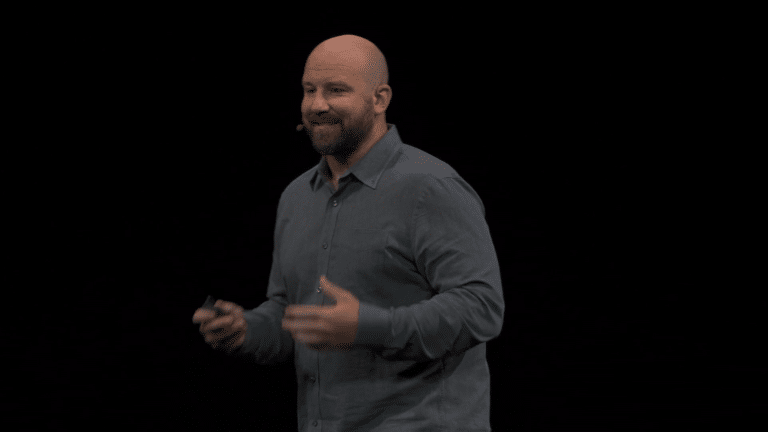
Among tech giants investing in their own versions of an AR future, Facebook arguably has the highest stakes. We’ve estimated that its annual XR R&D spend — not including its $2 billion Oculus acquisition — approaches $10 billion. It’s playing a long game and is firmly committed.
That includes both AR and VR, the latter being more tangible today, given Oculus’ in-market status. AR is earlier in its lifecycle but potentially greater in impact for Facebook and everyone else. This is partly due to AR’s potential all-day ambient use in a wearable form factor.
For both AR and VR, you could argue that Facebook is doing them a favor by investing so heavily. It’s doing so selfishly of course, but will rise other boats in the process. With Oculus for example, it subsidizes hardware to jumpstart a network effect, which benefits consumers and developers.
To go deeper, we recently broke down the takeaways from Mark Zuckerberg’s appearance on the Information’s 411 Podcast. Since then, VP of Facebook Reality Labs Andrew Bosworth’s appeared on Bloomberg Technology, which we’re featuring for this week’s XR Talks.
Mainstreaming XR
One of VR’s early characteristics is its gaming bent. Like some technologies that preceded it — including desktop PCs — gaming is a leading use case for VR. But for the technology to truly break out of its early-stage shell and appeal to the masses, use cases will have to broaden.
Bosworth sees several areas of expansion, some of which are already developing. That includes fitness apps such as Supernatural, which has seen Covid-driven demand inflections over the past year. But the biggest use case on Facebook’s long-term horizon (😉) is social.
In fact, one of VR’s strengths that’s already apparent is the ability to connect far-flung individuals. Personally speaking, our events and interactions in social VR platforms like Altspace VR have included meaningful connections. Facebook’s social play, Horizon, is only getting started.
But Bosworth admits that VR isn’t a social silver bullet. It’s great for bringing people together remotely as noted. But it’s not as effective in enhancing social connections for people that are in the same room. In fact, it becomes isolating in such contexts. That’s where AR will shine.
Dual Tracks
Facebook has been fairly straightforward about its AR plans, including Project Aria, and Live Maps. It believes that AR represents a longer-term future and has a potentially greater business case than VR, given its potential for all-day use in an ambient wearable, as noted.
But pursuing dual tracks is important as AR and VR share technological underpinnings. AR can advance and accelerate from on the work that Facebook is doing with VR, and vice versa. That goes for competency, as well as go-to-market advantages such as supply chain development.
Bosworth admits there’s a long way to go with AR and several hairy technical problems to solve. Beyond the well-known challenges like AR glasses bulk, heat and optical constraints, there are other orbiting challenges such as inputs. How do you command a pair of glasses?
Bosworth says that this is a key challenge because we won’t be carrying around keyboards. Voice is one answer, and wrist-worn AR inputs are another. Bosworth is bullish on the latter because we’re already comfortable with technology on that part of our bodies.
Path to Ubiquity
As for the timing on all of the above. Bosworth shares Zuckerberg’s earlier-stated predictions that AR could be a long journey that stretches into the 2030s. The good news is that it could follow the path of the smartphone in becoming fairly ubiquitous in a 10-year period.
Speaking of future-gazing, Facebook’s long-term visions (beyond social use cases) include transforming work. The pandemic has given us a glimpse of remote work, and many have discovered that it’s more viable than previously thought. But the tools and tech are still lacking.
AR and VR could connect us with colleagues just like they connect us socially. This applies mostly to knowledge workers but nonetheless has societal benefits. Less commuting has mental, safety, and environmental benefits, and more time to spend with your kids, says Bosworth.
But it’s also about fixing longstanding structural efficiencies. Your company pays for an office that no one occupies at night, while you pay rent or mortgage for a home that no one occupies all day. Immersive remote work could change some of these ingrained and inefficient systems.
Meanwhile, Facebook is off to a good start. It brought the cost of VR ownership down from almost $2000 to $299 in five years. And Quest 2 is on a tear: Bosworth reports that the device has sold more units in six months than all of its predecessors combined. Who says VR is dead…
See the video below for the full Bloomberg Technology episode. The Bosworth segment starts at 14:10.

